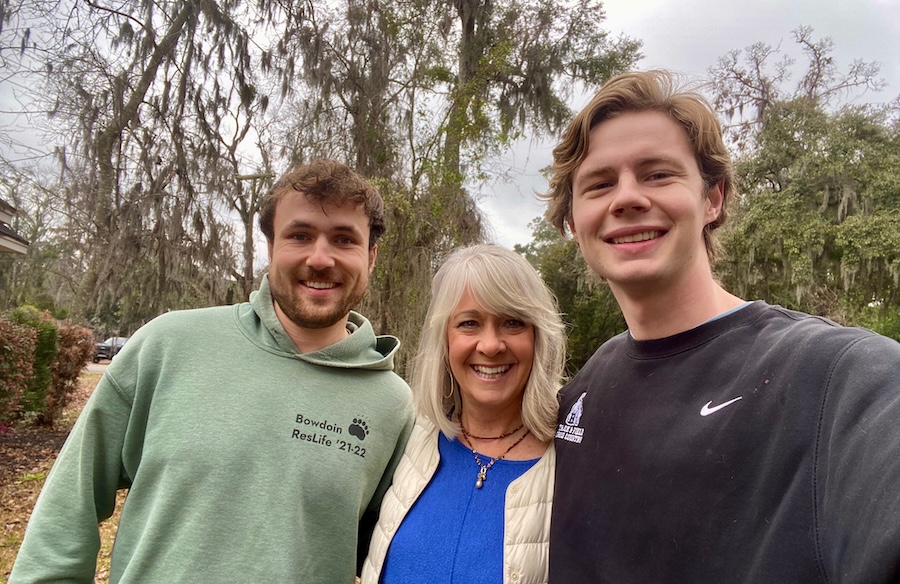The Jewish “Ghetto Girls” Who Fought Back against Nazis
By Tom PorterThey hid revolvers in teddy bears, they smuggled explosives in their underwear, they flung Molotov cocktails, they bombed German supply trains, they distributed underground bulletins, and they organized uprisings in Europe’s wartime ghettos.
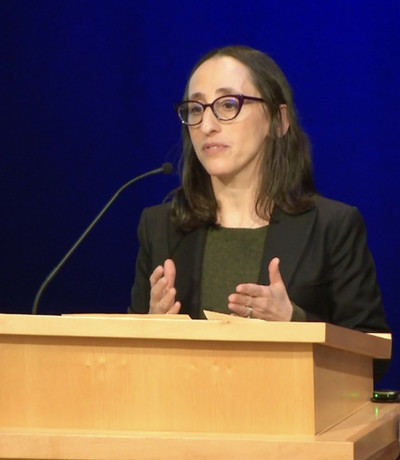
These were the so-called “ghetto girls,” the female Jewish resistance fighters of World War II brought to life in a recent talk given to the Bowdoin community by best-selling author and columnist Judy Batalion. It’s a subject she explored in her 2022 book The Light of Days: The Untold Story of Women Resistance Fighters in Hitler's Ghettos.
The event was part of the Bowdoin College Holocaust Education Lecture Series, launched last year.
In a sometimes-emotional address, Batalion acknowledged she was giving the talk in the present-day context of the “‘unfathomable” upsurge in antisemitism here in the US, which she described as “frightening for many Jewish people, like me, who lost family members in the Holocaust.”
Growing up in a Jewish family in Canada, Batalion is the granddaughter of Holocaust survivors (her mother was actually born in 1945 during her parents’ escape), something Batalion said has made her aware of what she calls “the emotional legacy of the Holocaust," the way that trauma trickles through generations.
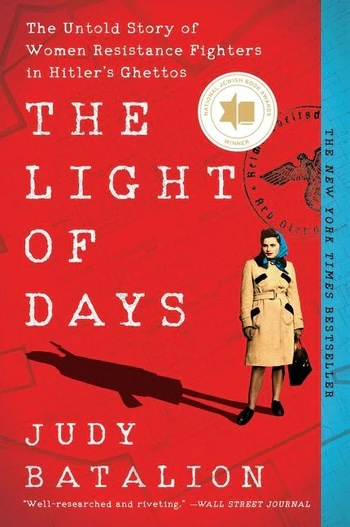
Batalion got the idea for the book (“a story of Jewish female bravado… a story of the power of community and compassion”) about seventeen years ago in the UK, where she was working as a museum curator, art history lecturer (having recently obtained her PhD from the Courtauld Institute), and occasional stand-up comic.
Curious about the role of Jewish women in the Holocaust, she was conducting research at the British Library when she came across the 1946 Yiddish book Freuen in di Ghettos (Women in the Ghettos), filled with accounts about young Jewish women who defied the Nazis.
“I speak Yiddish,” explained Batalion, “so I start flipping through this book,” where she encountered stories about dozens and dozens of young women who defied the Nazis, mainly from within the ghettos of Poland. As well as taking part of acts of sabotage, military resistance, and rebellion, they carried out important intelligence missions and community work, like setting up schools and soup kitchens.
“I was astonished to learn of the scope of the Jewish underground. Over ninety European ghettos had an armed resistance unit,” she said, while partisan networks provided help to some 12,000 hiding out in Warsaw alone. “Uprisings occurred in ghettos, in labor camps, and in death camps—all this alongside daily acts of resilience: smuggling food, friendship, making art, hiding, hugging a barrack mate to keep her warm, even telling jokes during transports to help relieve fear.” Women, most of them aged between sixteen and twenty-five, were at the helm of so many of these efforts. “I actually found thousands of them,” she said, deciding that their stories needed to be told in more detail.
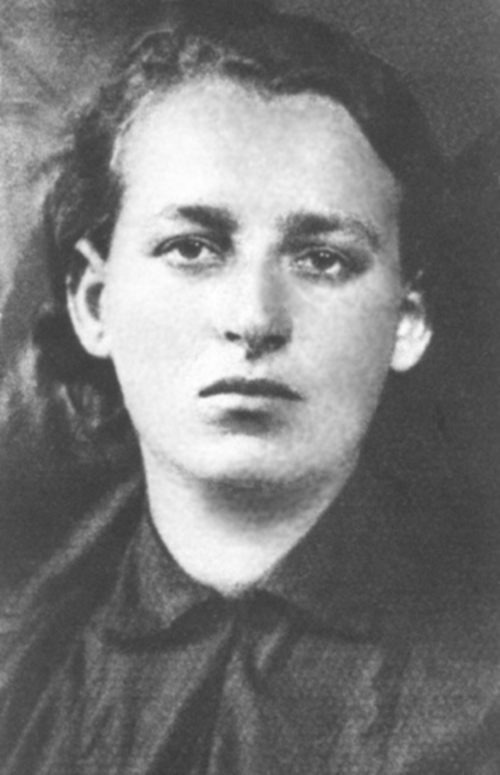
“So I began what turned out to be about a dozen years of work and research in Poland, Israel, England, and across North America in archives and in living rooms, at memorial monuments and in the animated streets of former ghettos,” said Batalion. “I trawled through testimonies, letters, photographs, obscure documentaries, and the towns where these heroines were born.”
Some of the women highlighted by Batalion include the extraordinary Frumka Płotnicka, a youth leader who, having initially evaded the Nazis, smuggled herself back into occupied Warsaw. She become a leader in the city’s ghetto, where, among other things, she ran soup kitchens and schools. Plotnicka would sometimes further risk her life by escaping from the ghetto to visit other Jewish communities, said Batalion, traveling across Poland, keeping communities connected, and spreading information about the mass killings that were being perpetrated by the Nazis.
Plotnicka helped plan ghetto uprisings in Warsaw and in the southwestern Polish town of Będzin, and it was there that she was killed in a 1943 in a shootout with German soldiers trying to transport Jews to the Auschwitz extermination camp. Today there is a monument to her in Warsaw.
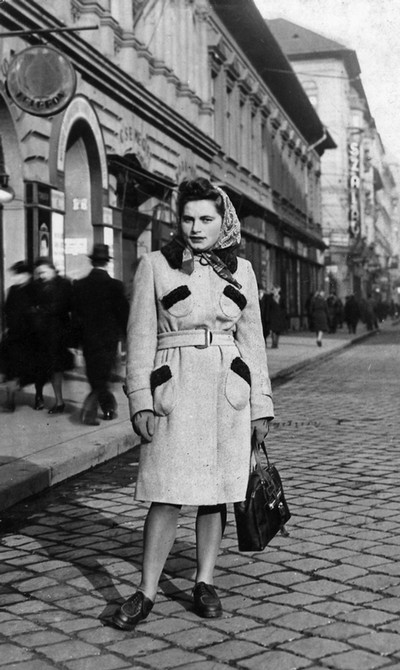
Other heroines survived the war, such as Renia Kukielka, who died in Israel ten years ago. Her adventures included jumping from a moving train to escape the Nazis after being recognized. Kukielka looked more Slavic than Jewish, said Batalion, so she was able pass as a Christian. As a result, she became what was known as a “courier girl,” bringing information, documents, and weapons into the ghettos. At one point, we are told, she taped grenades to her body, underneath her clothes, as well as hiding money and false papers in her undergarments and shoes.
Jewish women tended to be better suited than men to this kind of courier work, said Batalion, as they were able to integrate more easily into society, traveling unnoticed on the streets of Nazi-occupied Europe. That’s because, unlike the boys, Jewish girls normally went to non-Jewish schools so were better at pretending to be Christian. “Also, the Nazis were sexist and did not tend to suspect women of having weapons in their handbags!”
For decades after the war, said Batalion, the stories of women like these were hidden and not really discussed, often for personal reasons. Those who survived, she explained, often suffered from survivor’s guilt. Also, they were still young when the war ended and wanted to get on with their lives, raise families, and put this trauma behind them.
“It's through these young women that I learned personally that not only is trauma passed through generations of Jewish women, but so is courage and daring, passion, and compassion.”
Some eight decades on, concluded Batalion, it’s time these inspirational women were more widely acknowledged, and their stories heard.
An Inspirational Family Story
Bowdoin’s Holocaust Lecture Series is sponsored by the Gabry Family Fund, which was established by Mark Gabry P’07, P’10, Shelley Katsh P’07, P’10, Jonah Gabry ’07, and Raya Gabry ’10. The series was set up in memory of Mark’s parents, Masha and Sol Gabry, to promote understanding and knowledge of the Holocaust in the Bowdoin and greater Brunswick, Maine, communities through an annual lecture.
Masha Gabry was a Holocaust survivor. Born in 1921 in Vilna, Poland (now Vilnius, Lithuania), Masha and her family were stripped by the Nazis of their business, their home, their belongings, and their way of life. Masha’s father and first husband were forced to dig their own graves, then murdered in the nearby forest of Ponary, along with seventy thousand other Jews.
After first being forced into the Vilna Ghetto, Masha, her sister, and her mother were later transported by cattle cars to concentration camps. Miraculously, they survived.
Sol Gabry was born in 1908 in Warsaw, Poland, the youngest of seven children. In 1938, among increasing Nazi persecution, he was given the opportunity by his employer to leave Warsaw.
Sol escaped to Argentina, hoping to reunite with his family at a safer time.
In 1940, however, his family was forced into the Warsaw ghetto, where Sol’s mother died from the harsh conditions.
Two years later, the family was transported to the Nazi extermination camp Treblinka, where all of Sol’s siblings and their children were murdered.
Emilia Krakora ’24 writes: “I was deeply moved by Judy Batalion’s Holocaust lecture, especially by the story of the woman who escaped the ghetto but in her fearlessness returned to bring supplies and aid to others. It was truly inspiring to hear about how these women smuggled weapons, hid ammunition in their clothes, and paid off Nazi guards in acts of courage and selflessness. This talk connected meaningfully to our unit on how Germany is coming to terms with the past and my presentation on the significance of Willi Brandt kneeling at the Warsaw Ghetto memorial. It reinforced the importance of confronting difficult truths and honoring those who fought against injustices during the most difficult times as we reconcile the past.”
Krakora is a student in Professor Jill Smith’s class on German history through visual culture (GER 2204).
Masha and Sol met after the war in the US and married in 1949. They had three children, established successful careers, and were part of a thriving Jewish community. Sol died in 1978. Masha lived to the age of ninety-five.
Sol’s and Masha’s children remember their parents’ dream of future generations being educated about the Holocaust, in the hope that genocide will never happen again.
